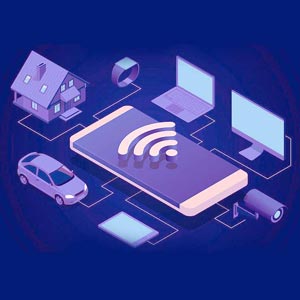THANK YOU FOR SUBSCRIBING

Microdata Centers, Edge Computing, and Making Business Decisions in Real Time
Venkatraman Swaminathan, VP, IT Division, India and Saarc, Schneider Electric, India


Venkatraman Swaminathan, VP, IT Division, India and Saarc, Schneider Electric, India
Technology is fundamentally changing how businesses are conducted. Companies are aggressively looking at driving up revenues and edging out competition by offering exceptional services to clients by adopting digital tools. Leveraging the predictive abilities of data to deliver relevant solutions to businesses is a critical aspect that businesses are seeking to leverage for building greater efficiencies at work. Advances in machine learning, data science, and computing power can turn these vast amounts of data into value-creating insights. Businesses are investing in new software, updating IT infrastructure, and keeping a close tab on tech advancements to use them to the optimum. They are moving towards new computing models to gain deeper and quick actionable insights to cater to customers.
The buzzword in the tech world for 2018 is edge computing and it has become the talk of the sector. Edge computing—which brings computing power, control, storage, and applications closer to end users—is making devices easier to operate. Edge computing essentially means moving away from a centralised model of data, applications, services, etc., and inching closer to a more distributed network. Edge computing is an integral part of digital transformation and for any industry it is quite imperative to have edge-enabled physical infrastructure, which helps industry to house their critical application at edge site with maximum availability, space optimization, remote management and scalable.
The need to perform analytics in real time is critical to businesses, who are exploring tech capabilities to put in place revolutionary computing solutions. Edge computing, in this regard, is enabling them to delve deep into data, conduct analytics and make informed decisions. An extension to the cloud, edge computing solves an array of challenges that companies face such as latency, governance, security and monitoring.
Edge computing can not only help in weeding out roadblocks, but also provide seamless and secure service. This, in turn, helps various businesses in scaling up and generating revenues as in the modern-day world where clients are looking for faster response time and dependable providers.
Edge computing—which brings computing power, control, storage, and applications closer to end users—is making devices easier to operate
Here are 6 big challenges that edge computing can tackle and ensure smoother functioning and real-time decision making:
Latency: Any device connected to the internet has to be responsive in a matter of milliseconds. Any lag in the communication between network and devices is termed as latency. Edge computing can eliminate latency issue as it works on the principle of a more distributed network, makes sure there is no disconnect in real-time information processing and gives a more reliable network.
Security: In an edge architecture, any outage would be limited to the edge computing device and the local applications on that device. APC by Schneider Electric works with new or existing systems to optimize monitoring and to spot and prevent power problems before they occur.
Real-time data: Edge computing sites send real-time data and alerts without any disturbances. The efficient monitoring system can prevent and rectify issues even before they arise.
Cost: Edge computing minimizes the capital outlay and operating expenses. The APC by Schneider Electric’s solutions integrate with new or existing hardware and software and configure to scale so you can control costs now and plan for future growth only as needed.
Governance: Every company wants to build a culture of information technology at par with industry standards, complying with data regulations.
Dependable: Edge computing can earn you a reputation in the industry. It makes smart devices perform without any lag, which is an ideal requirement for any business, especially manufacturing.
So, which are the industries that will benefit the most from edge computing? 5G applications are set to benefit the most. The responsiveness and bandwidth will be expected to be significantly high as 5G communication is projected to perform upwards of 1000x faster than 4G. To achieve this, small data centre will be required. Edge computing will play a pivotal role here.
Edge computing can make a real difference in the connected world of smart cities. From transportation to buildings to streetlights, everything will be connected. Every application will have to have a strong responsive system and edge computing can make smart cities a hit.
Industries that will rope in AI will use edge computing to the optimum. It will streamline manufacturing, medical operations, etc., with efficiency and in a cost-effective manner. The small data centers will help industries respond in a bid of milliseconds.
Edge computing is going to become a huge IT trend as it moves closer to the devices. Gartner projects that IoT devices will climb to a total of $50 billion by 2020, up from $20 billion and this demand will drive the need for edge computing. As per IDC, the global edge analytics market will grow 27.6 percent CAGR by 2025. Every company will look for cutting edge infrastructure.
Are you edge ready yet?
Weekly Brief
I agree We use cookies on this website to enhance your user experience. By clicking any link on this page you are giving your consent for us to set cookies. More info
Read Also













